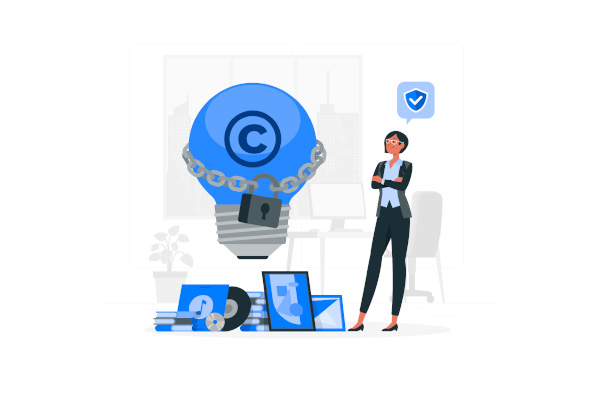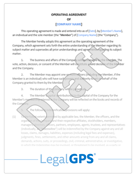How to Avoid Copyright Infringement: A Practical Guide
Copyright infringement can be a serious problem, and it's essential to understand how to use others' creative works without crossing the line into...
5 min read
LegalGPS : Oct. 14, 2024
Navigating the line between copyright infringement and fair use can be tricky. Fair use lets you use someone else's copyrighted material without permission, but only under specific circumstances. Let’s dive into what fair use means, how it’s determined, and how you can protect yourself from infringement claims.


Legal GPS Pro
Protect your business with our complete legal subscription service, designed by top startup attorneys.
Fair use is an exception to copyright law that allows you to use another creator’s copyrighted work without their permission. The original idea behind fair use was to encourage commentary and criticism—letting people learn from each other to enhance the arts and sciences. Over time, fair use has expanded, and now it also covers using copyrighted works for commentary, critique, news reporting, teaching, and research.
In simple terms, fair use allows you to use another’s work without infringing on their rights—if it meets certain criteria.
Determining fair use comes down to evaluating four key factors:
The first thing to consider is the nature of the work you’re using. Is it creative or factual?
Creative vs. Factual: Creative works, like paintings, novels, or movies, are generally more protected because they involve personal expression. For example, if two artists were asked to paint a landscape, their results would likely be very different—reflecting individual creativity. This makes it harder to argue fair use.
In contrast, factual works—such as news articles or scientific reports—tend to have a lower barrier for fair use. Factual content is often more about conveying information, and many sources might provide similar takes on the same topic.
Published vs. Unpublished: Another important factor is whether the original work has been published. If it hasn’t, the creator has more control over how and when their work is shared with the public. This means using unpublished material is less likely to qualify as fair use.
Example: Quoting from a novel that has been released to the public might be more justifiable than using content from an unpublished manuscript, which the author hasn’t chosen to share yet.
Consider why you are using the work. Is your use commercial or noncommercial?
Commercial vs. Noncommercial: If you are using the work to make money, fair use becomes harder to prove. For example, using a copyrighted image in a product advertisement is more likely to be infringement compared to using the same image in a school project.
Noncommercial uses, such as educational presentations, critiques, or academic papers, are more likely to fall under fair use.
Transformative Use: Is your use transformative? This means adding new meaning or altering the original purpose. For example, using a clip from a movie to create a humorous parody or add social commentary could be considered transformative.
Example: A well-known case involves artist Jeff Koons, who used a photo from an advertisement in his artwork. The courts found his use transformative because he repurposed the photo to provide social commentary, turning it into a new form of artistic expression.
Prevent Copycats With Patents, Trademarks, and Copyrights
The third factor involves how much of the original work you’re using.
How Much Is Too Much?: The more you use, the harder it is to argue fair use. Try to use only what’s necessary to make your point. For example, quoting a few lines of a song to analyze its lyrics is more acceptable than using the entire song.
Using the Heart of the Work: If you’re using the most important part of the work—the element that makes it unique and valuable—it is less likely to be considered fair use. Think of it this way: if you’re using the “heart” of a song, a movie, or a book, it might be the very part that makes the original valuable to its audience.
Example: Using a key scene from a movie without adding commentary could be seen as taking the “heart” of the work, whereas briefly referencing a less significant part of the film to make a point may be more permissible.
The final factor considers how your use affects the market value of the original work.
Market Harm: If your use could negatively impact the original creator’s ability to profit from their work, it’s less likely to qualify as fair use. For instance, if your use acts as a substitute for the original, then it’s a problem.
Substitution vs. Transformation: If your work is essentially a substitute that people could use instead of purchasing the original, that’s strong evidence of market harm. On the other hand, a work that transforms the original into something different and offers new insights or value is less likely to cause market harm.
Example: Uploading an entire movie to YouTube for free is a clear example of harming the market—it provides a substitute for viewers who would otherwise pay to watch the movie. However, creating a parody skit that adds humor and commentary might not hurt the market value of the original film.


Legal GPS Pro
Protect your business with our complete legal subscription service, designed by top startup attorneys.
Here are some actionable steps to help ensure your use is likely to qualify as fair use:
If you’re critiquing or commenting on someone else’s work, use only as much of the original as you need to make your point. For example, if you’re reviewing a book, it’s enough to quote a few relevant passages to illustrate your opinion—there’s no need to reproduce whole chapters.
When reporting on another work, summarize rather than copy. Use the information to create a new perspective or add context. For example, when covering a new book, summarize the plot and highlight key themes rather than copying large excerpts.
Tip: Adding your own analysis helps distinguish your work from the original and strengthens your fair use claim.
If you’re using copyrighted materials for educational purposes, keep your use noncommercial. For instance, playing a short clip from a documentary in a classroom to support a lesson is likely fair use—but distributing copies of the entire documentary to students is not.
Tip: Encourage students to purchase or borrow the original work when more extensive use is necessary.
Parody is a great example of transformative use. To qualify as fair use, your parody should be clearly distinguishable from the original, offering a humorous or critical take. For example, creating a cartoon that pokes fun at a famous movie is more likely to be protected under fair use than simply reusing scenes from the film without any changes.
Tip: Make sure the intent of your parody is obvious—transforming the original into something that adds commentary or humor is key.
One common misconception is that citing the source automatically makes your use fair. While proper attribution is always good practice and helps avoid plagiarism, it does not shield you from copyright infringement claims. Fair use is determined by purpose, amount, transformation, and market impact—not by whether you give credit to the original creator.
Another misconception is that personal use is always fair use. Just because you’re using something personally doesn’t mean it qualifies. Always consider whether your use impacts the original’s value or market, and whether it transforms the original in a meaningful way.
Fair use can be complex, but understanding these guidelines can help you navigate it confidently. Always consider the purpose, the amount, the transformation, and the impact of your use—and when in doubt, consult a legal expert to protect yourself from potential infringement claims.
By taking these steps, you can use creative works responsibly while respecting the rights of original creators.
The biggest question now is, "Do I need a business lawyer?” For most businesses and in most cases, you don't need a lawyer to start your business. Instead, many business owners rely on Legal GPS Pro to help with legal issues.
Legal GPS Pro is your All-In-One Legal Toolkit for Businesses. Developed by top startup attorneys, Pro gives you access to 100+ expertly crafted templates including operating agreements, NDAs, and service agreements, and an interactive platform. All designed to protect your company and set it up for lasting success.

Legal GPS Pro
Protect your business with our complete legal subscription service, designed by top startup attorneys.

100+ legal templates, guides, and expert advice to protect your business.
Trusted by 1000+ businesses

Copyright infringement can be a serious problem, and it's essential to understand how to use others' creative works without crossing the line into...

To be eligible for trademark registration, you have to be using a mark (likely your business name) to identify your brand to the public. And you have...

If you've successfully filed a trademark application, congratulations—you've completed an important step in securing your brand. But to maintain your...